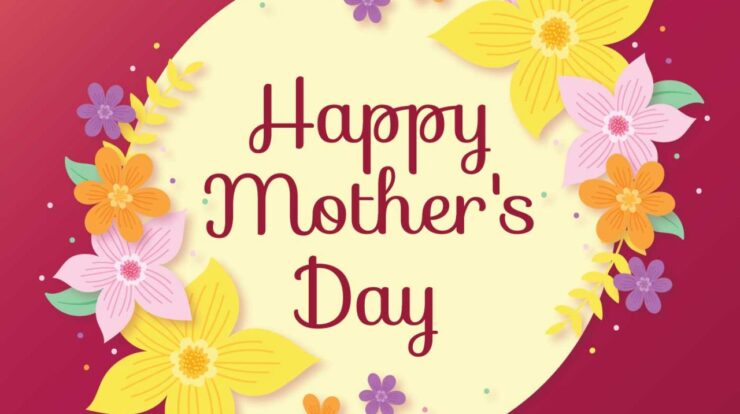
How to live as a villain ch 94 is a captivating chapter that delves into the complex world of villainy. It provides a comprehensive guide to the strategies, psychology, and impact of being a villain.
This chapter explores the effective methods and approaches for carrying out villainous acts, analyzing the motivations and drives that define a villainous character, and discussing the design and functionality of a villain’s lair.
Villainy in Action
Villains employ various tactics and strategies to achieve their nefarious goals. From subtle manipulation to overt aggression, the methods they choose depend on their motivations, resources, and the specific situation.
Effective Villainous Methods, How to live as a villain ch 94
- Infiltration and Deception:Villains may infiltrate organizations or social groups to gather intelligence, manipulate events, or undermine trust from within.
- Psychological Warfare:Using fear, intimidation, or manipulation, villains can sow discord, demoralize opponents, and control their actions.
- Physical Force:While not always necessary, villains may resort to violence to achieve their ends, ranging from targeted assassinations to full-scale attacks.
- Exploitation of Technology:Villains often leverage technology to enhance their abilities, create distractions, or disrupt systems.
Examples of Successful Villains
Throughout history, villains have employed various tactics with varying degrees of success:
- The Joker (Batman):Known for his chaotic and unpredictable nature, the Joker uses psychological warfare and intimidation to create terror and undermine society.
- Loki (Marvel Cinematic Universe):A master manipulator, Loki infiltrates Asgard and Earth, using deception and cunning to achieve his goals.
- Darth Vader (Star Wars):A formidable warrior and strategist, Vader employs the power of the Dark Side and his advanced technology to conquer and control the galaxy.
Consequences and Risks
While villains may achieve their immediate objectives, their actions often carry significant consequences:
- Moral Corruption:Embracing villainy can lead to a loss of empathy, a disregard for human life, and a descent into darkness.
- Legal Repercussions:Villains who break the law face the risk of arrest, imprisonment, or even execution.
- Societal Backlash:Villains’ actions can provoke widespread fear and anger, leading to a negative impact on their reputation and the well-being of others.
Psychological Profiling

Unveiling the depths of the villainous psyche, we embark on a journey to understand the motivations, drives, and psychological traits that shape these enigmatic characters. From the depths of fiction to the complexities of real-life, we seek to identify common patterns and characteristics that define the villainous mind.
The development of a villainous persona is a multifaceted process influenced by a myriad of factors. Upbringing, experiences, and environment play pivotal roles in shaping the psychological landscape of a villain. Early childhood trauma, neglect, or exposure to violence can sow the seeds of resentment and hostility, laying the foundation for future villainous tendencies.
The Influence of Upbringing
- Abusive or Neglectful Childhood:Exposure to physical, emotional, or sexual abuse during childhood can damage a child’s sense of security and self-worth, creating a fertile ground for feelings of anger, resentment, and a desire for revenge.
- Parental Rejection:Children who feel unloved or rejected by their parents may develop a sense of emptiness and isolation, making them more susceptible to seeking validation through villainous acts.
- Lack of Positive Role Models:Growing up without positive role models can hinder the development of empathy, compassion, and prosocial behaviors, increasing the likelihood of engaging in antisocial and villainous activities.
The Villain’s Lair
A villain’s lair is not merely a dwelling place; it is a reflection of their personality, ambitions, and the sinister plots they concoct. The design and functionality of this hidden sanctuary are crucial to the villain’s operations, providing them with the necessary resources, security, and aesthetic flair to execute their nefarious schemes.
Location
The location of a villain’s lair is paramount, offering both strategic advantages and a sense of isolation. Secluded islands, abandoned warehouses, and remote mountain fortresses provide ample opportunities for concealment and privacy. The lair’s proximity to the villain’s target or area of influence is also a key consideration, allowing for quick access and escape routes.
Security Measures
The security of a villain’s lair is of utmost importance, as it protects their identity and prevents unwanted intrusions. Advanced surveillance systems, motion detectors, and impenetrable walls are common features. Biometric locks, hidden entrances, and decoy rooms add additional layers of protection.
The lair may also be equipped with escape tunnels or secret passages for emergencies.
Technological Advancements
In the modern era, villains rely heavily on technology to enhance their lair’s functionality and security. Supercomputers, advanced weaponry, and sophisticated communication systems provide them with a technological edge. Some lairs even feature holographic projectors, virtual reality simulations, and artificial intelligence systems to aid in planning and execution.
Iconic Villainous Lairs
Throughout history, villains have created iconic lairs that have become synonymous with their nefarious deeds. Darth Vader’s Death Star, the Joker’s abandoned amusement park, and Lex Luthor’s LexCorp Tower are just a few examples of how a villain’s lair can become an extension of their character and enhance their sinister image.
Villainous Alliances and Rivalries

Villainous alliances and rivalries are complex and dynamic relationships that can shape the course of a villain’s career. Alliances can provide villains with access to resources, power, and protection, while rivalries can drive villains to greater heights of evil or lead to their downfall.
There are many different factors that can motivate villains to form alliances. Some villains may be drawn together by a shared goal, such as conquering the world or overthrowing a government. Others may form alliances for mutual protection, or to pool their resources and knowledge.
Whatever the motivation, villainous alliances can be a powerful force for evil.
Power Struggles and Betrayal
Alliances between villains are often fraught with power struggles and betrayal. Each villain may have their own agenda, and they may be willing to betray their allies if it serves their own interests. This can lead to a cycle of violence and mistrust, as villains constantly jockey for power and try to outmaneuver each other.
One of the most common types of villainous rivalries is the “archenemy” rivalry. This is a rivalry between two villains who are constantly trying to outdo each other. They may have a personal grudge against each other, or they may simply be competing for power and influence.
Yo, check out how to live as a villain ch 94 if you wanna see how the bad guys do it. They’re always scheming and plotting, but it’s all in good fun. Plus, you get to see the hero get taken down a peg or two, which is always satisfying.
Archnemesis rivalries can be a source of great drama and excitement, as the villains constantly try to one-up each other.
Another common type of villainous rivalry is the “ideological” rivalry. This is a rivalry between two villains who have different beliefs about how to achieve their goals. They may disagree on the best way to conquer the world, or they may have different ideas about what kind of world they want to create.
Ideological rivalries can be just as intense as archnemesis rivalries, as the villains are fighting for what they believe in.
Benefits and Drawbacks of Alliances
There are both benefits and drawbacks to forming alliances with other villains. On the one hand, alliances can provide villains with access to resources, power, and protection. They can also help villains to achieve their goals more quickly and easily.
On the other hand, alliances can be fraught with power struggles and betrayal. Villains may also find themselves beholden to their allies, which can limit their freedom of action.
Conclusion
Villainous alliances and rivalries are a complex and fascinating aspect of the villainous world. They can provide villains with power, protection, and resources, but they can also lead to betrayal and conflict. Ultimately, the decision of whether or not to form an alliance is a difficult one that each villain must make for themselves.
Chapter 94 of “How to Live as a Villain” is a must-read for anyone interested in the complexities of morality. The chapter explores the protagonist’s struggle with his inner demons as he navigates the treacherous path of villainy. Through vivid imagery and thought-provoking dialogue, the author delves into the psyche of a villain, examining the motivations and consequences of their actions.
If you’re looking for a gripping tale that challenges your perceptions of good and evil, then “How to Live as a Villain” ch 94 is a must-read. Click here to read the chapter now.
Villainous Legacy
The actions of a villain can have a profound and lasting impact on the world and its inhabitants. The consequences of their deeds can reverberate through generations, shaping the course of history and leaving an enduring mark on the collective consciousness.
For the villain themselves, their legacy can be a source of both pride and regret. Some villains revel in the infamy they have achieved, while others are haunted by the pain and suffering they have caused. The consequences of their actions can also extend to their families and loved ones, who may be ostracized or even punished for their association with the villain.
Potential for Redemption
The question of whether a villain can ever truly be redeemed is a complex one. Some argue that the very nature of villainy precludes the possibility of redemption, while others believe that even the most heinous of villains can find a path to forgiveness.
There are countless stories of villains who have turned away from their evil ways and dedicated themselves to making amends for their past actions. However, the road to redemption is often long and difficult, and there is no guarantee of success.
In the latest installment of the popular web novel, “How to Live as a Villain,” chapter 94 continues the thrilling adventures of the protagonist as they navigate the treacherous path of villainy. With each twist and turn, the reader is kept on the edge of their seat, eager to discover what fate awaits our anti-hero.
For those eager to delve into the next chapter, visit how to live as a villain ch 94 to continue the journey of a villain’s rise.
Enduring Infamy
For some villains, their legacy is one of enduring infamy. Their names become synonymous with evil and their deeds are remembered for centuries to come. Such villains may be reviled and feared, but they also exert a strange fascination over people.
We are drawn to stories of villains because they offer us a glimpse into the darkest recesses of the human soul. They remind us that even the most ordinary of people are capable of great evil.
Final Wrap-Up: How To Live As A Villain Ch 94

Overall, how to live as a villain ch 94 offers a fascinating exploration of the villainous archetype. It provides valuable insights into the motivations, strategies, and consequences of being a villain, making it a must-read for anyone interested in the psychology of evil.
Key Questions Answered
What are the key elements of a villainous lair?
A villainous lair should consider both practical and aesthetic aspects, including location, security measures, and technological advancements.
What are the common types of villainous rivalries?
Villainous rivalries can be based on power struggles, ideological differences, or personal grudges.





